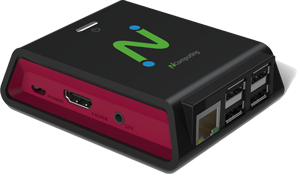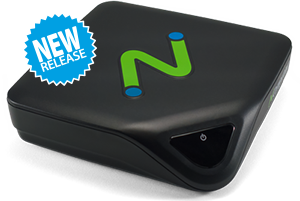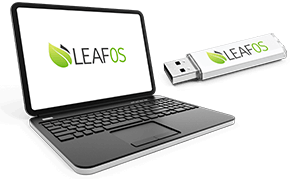IMPLEMENTING A VIRTUALIZED LEARNING ENVIRONMENT IN WEIßENBURG

In the schools in Weißenburg, Germany, terminal service-based virtual learning environments with “thin clients” from NComputing have been rolling out to classrooms since 2019. Fraught with outdated operating systems, computers, and networks from the previous “cooked their own digital soup” recipe, an IT teacher asked NComputing for a pilot solution to their many woes. NComputing partnered with the school’s IT administrators and teachers to solve longstanding problems with their digital learning environment.
“At the time, the students were still working on computers with the Windows 7 operating system, which was already outdated,” says NComputing specialist Mirko Lasarz. “Internet security, vandalism, and a high level of support were required for the many desktop computers.”
The forward-thinking staff didn’t just want to solve the pains of the old system. The new system would need to be somewhat future-proof: keep up with the fast pace of technology, integrate modern and existing learning tools, incorporate sustainable solutions, reduce operating costs, and make it easy to deploy at other locations.
The pilot focused on sustainability - making what they have work better while adding technology that enhances everything else. The PC’s running Windows 7 were outdated, but the hardware was still serviceable. By wiping the operating systems off these devices and installing LEAF OS, NComputing’s repurposing software, we converted these computers to thin clients - moving all future data from these devices to the servers.
LEAF OS is a Linux-based operating system that provides the basics for virtualization computing. It communicates with the virtualization servers and displays a unique Windows desktop for each user.
Once we verified the solution during the pilot, we planned the first deployments for a vocational high school and the Alltmühlfranken School in Weißenburg-Gunzenhausen. Converting the desktop PCs using LEAF OS allowed them to access the virtualized Windows instances via RDS on terminal servers in the school basement.
From a student’s perspective, they can’t tell they are running a virtual computer. They still use the same physical devices - keyboard, mouse, display, and PC. They have access to the latest Windows operating system and software. Because servers in the basement do the actual computing, these PCs stay cool and quiet.
Teachers get a bump in productivity, too—no more waiting for the PC systems to boot. “The teachers now have more time for actual teaching. We save on electricity and maintenance, and we can add new workstations much more easily when necessary,” says Norbert Wörlein, the digitization officer at the Weißenburg district office. It often took five to ten minutes to start up all the desktop computers and run the software needed for teaching. The new thin clients are ready for operation in a matter of moments. With a unified digital recipe, “Teachers can now help each other more easily if a problem arises, exchange concepts once they have found them, and take them from classroom to classroom.”
The Altmühlfranken-Schule Weißenburg-Gunzenhausen uses whiteboards, beamers, and document cameras in everyday teaching. NComputing has integrated these and other modern digital visual aids. The infrastructure controls these devices, processes their image and video data, sends them to the thin clients, and displays them smoothly without needing expensive and power-consuming local graphics cards. When teachers change classrooms, they can take their entire teaching environment with them - and continue precisely where the last session ended.
The computing power is now out of the classroom into a well-tempered, protected basement. NComputing software running here manages the operating system and software that each thin client taps into. It manages software licenses, provides access controls, and remotely administers any maintenance or updates the thin clients need. The number of people with physical access to the system’s core is restricted, increasing overall security.
The new architecture protects the school and its IT infrastructure better against vandalism by boisterous students, introduced malware, and theft than the previous Windows PCs. “A thin client separated from its network is virtually useless and unsellable, so it is not a worthwhile target for thieves,” explains Mirko Lasarz. The Linux-based operating system running on the thin clients is robustly immune to the malware that otherwise tends to infect Windows-based computers through contaminated data media, phishing, or direct Internet attacks.
With the elimination of power-sapping PCs, reduced need for air conditioning in the classrooms, and a consolidation of computing power in the basement, the schools see a significant reduction in electricity usage. IT admin can largely stay out of the classrooms, orchestrating all updates and maintenance remotely.
At the Altmühlfranken school alone, 36 LEAF OS thin clients are in use along with the IT infrastructure. If you add up all the projects in Weißenburg, NComputing has already set up around 120 thin clients at the participating schools. “In view of the good experience, we want to convert more schools together with NComputing in the future,” said Norbert Wörlein. “The partnership has always been very trusting, and the support is great at NComputing–but above all, the whole concept is convincing in practice. These solutions help us save significant resources and make IT at our schools more secure.”



-menu.png)


